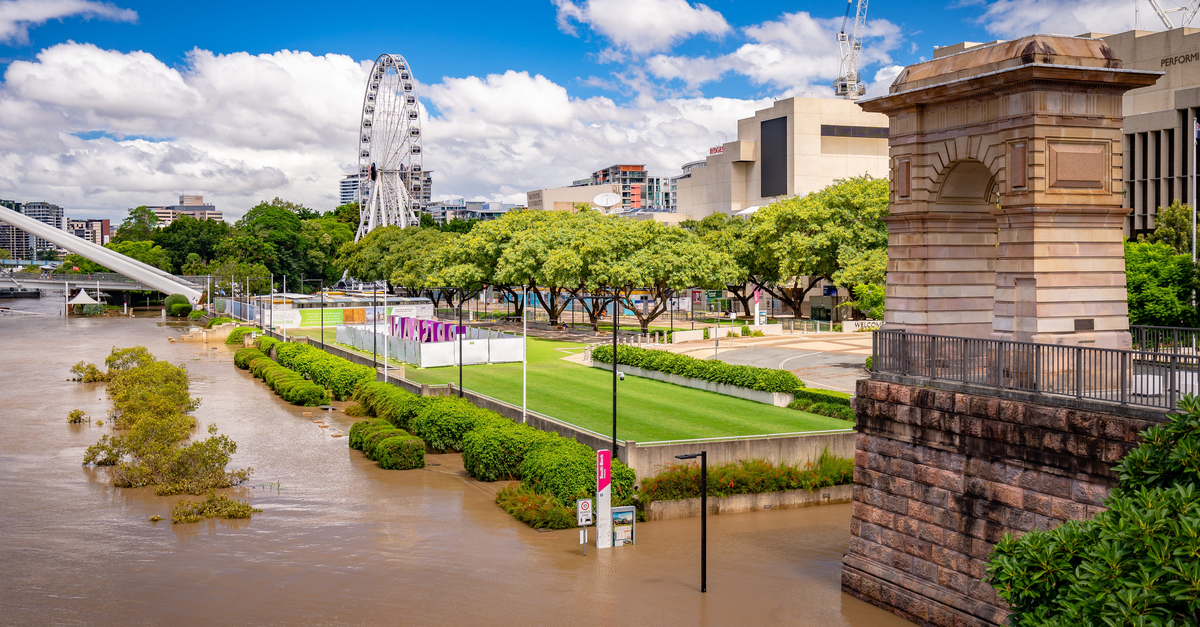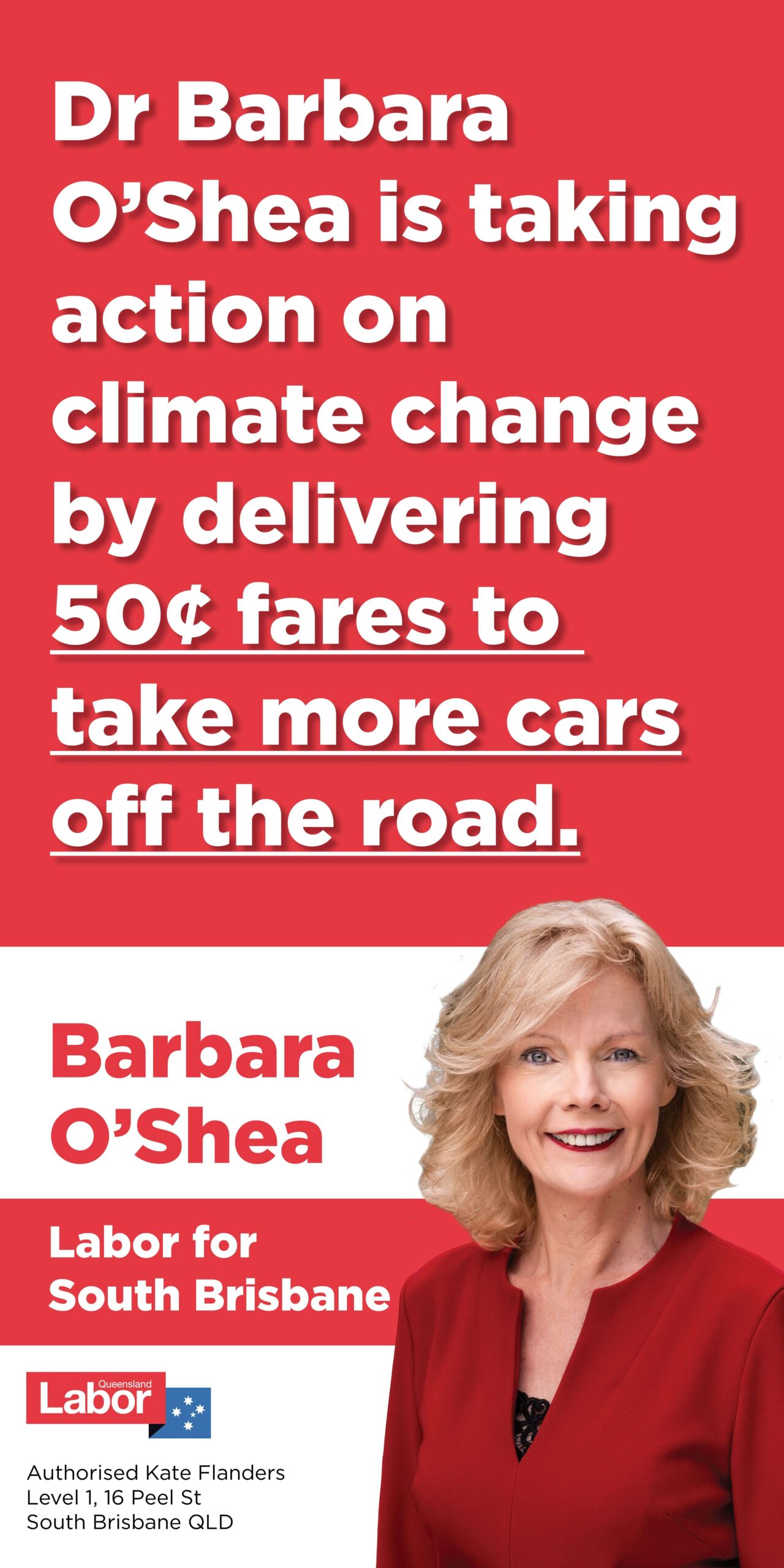Zero-Emissions Brisbane is a group of community volunteers who have come together to progress greater climate change action across Brisbane. ZEBne is the latest of almost 200 zero-net carbon communities across Australia.
We have a big vision and a big plan, our first project is Zero-Net Kurilpa, the aim is to work in partnership with the West End community to achieve zero-net greenhouse emissions within five to ten years. What we trial and pilot in West End, we will then share with other local Ward-based groups across the City of Brisbane.
Outlined here is why we advocate for a science-based target for Brisbane of a reduction of greenhouse emissions of 75% below 2005 levels by 2030 and net zero emissions by 2035.
Adopting a Science Based Target for Brisbane
All science-based targets take into account the global carbon budget and how it relates to keeping global average temperature increase well below +2°Celsius. This is explained in detail in the recently released International Panel on Climate Change (IPCC) sixth Assessment Report.
In 2021, the Climate Council in following the IPCC process, recommended that for Australia to play its fair part in the rapid, sustained emissions reductions required globally:
Australia should aim to reduce its emissions by 75% below 2005 levels by 2030, and to net zero by 2035
The Climate Council also assessed that it is an achievable contribution to the global task and imperative given our high vulnerability to escalating extreme weather.
For more information refer to the Climate Council’s report “Aim High, Go Fast: Why Emissions need to plummet this Decade”.
Carbon Pollution and Local Government?
Local governments can impact up to 70% of emissions in their communities making them essential in leading and facilitating carbon mitigation, adaptation and resilience planning.
This is why, Zero Emissions Brisbane along with the zero-carbon community and the zero-net towns network have a particular focus on local government.
Brisbane is responsible for 5% of Australia’s carbon pollution
In 2019, with a population of 1.25 million, the community of City of Brisbane emitted over 26.7 Mega Tonnes of greenhouse emissions. Where the City of Brisbane includes the corporate emissions from Brisbane City Council and municipal services such as landfill and public transport, plus the emissions from all the households, commercial sector, industrial processes and transport.
As a comparison, Brisbane is approximately:
- 16 per cent of Qld emissions with 24 per cent of Qld population.
- 5 per cent of Australia’s emissions with 5 per cent of Australia’s population.
Noting electricity and transport are Brisbane’s highest sources of emissions, with 60% from electricity use, 28% from transport and 6% from use of gas. This illustrates why decarbonising the electricity sector is key to achieving any carbon reduction target for Brisbane.
Carbon pollution from electricity can be broken down further by sector, where the residential sector is ~20 per cent, the commercial sector ~ 30 per cent and the industrial sector ~50 per cent of Brisbane’s total.
Has Brisbane’s Carbon Emissions peaked?
The greenhouse emissions from across the City of Brisbane are increasing and with mixed indications of peaking.
There are indicators that the City of Brisbane is benefiting from the strong trend to renewable energy investment by both the community and energy utilities and guided by renewable energy targets by state governments. However, there are mixed indicators making it difficult to claim that Brisbane’s carbon emissions have peaked or if emissions are yet to peak.
Without direct interventions such as decarbonising the transport and electricity sector, carbon emissions will follow economic activity. Covid-19 has impacted the economy and it has also resulted in increased emissions from private transportation.
The trick to decarbonising our economy is to delink carbon emissions from economic activity and the decarbonisation of the electricity and transport sectors are key.
What is Brisbane City Council Target?
In 2001, Brisbane City Council adopted two greenhouse emissions reduction targets:
- Carbon neutrality for Brisbane City Council’s operation by 2020.
- Community reduction target of 20 per cent below 2000 levels by 2020.
Since 2016, Brisbane City Council has achieved carbon neutrality through the purchase of a mix of Australian and international carbon offsets.
At some stage, the second target, covering the greenhouse emissions from the local government area of Brisbane was abandoned and replaced with a householder target:
“to help residents reduce their household carbon emissions from home energy use, transport, and waste to six tonnes on average by 2031. The current household average is around 11 tonnes, so this represents about a 50 per cent reduction”.
As part of the Zero-net Kurilpa project we will be seeking to verify what the emissions level from the average household are and how it compares to the Queensland per capita basis of the 34.3 tonnes of carbon dioxide equivalent (tCO2e) per person.
Question for Brisbane City Council?
The first question we have for the Brisbane City Council is “when are carbon emissions from the City of Brisbane going to peak and then reduce?”
Secondly, “Who will step up and take responsibility for steering the decarbonisation transformation across the City of Brisbane?”
What are other cities and Local Governments doing?
In looking across Australia, the majority of local governments are focusing on the council’s internal operations rather than their community. This is steadily changing with an increasing number of Australian and global cities adopting emission reduction targets.
However, any target is meaningless, unless all policies are aligned to support that target, that planning requirements are aligned, procurement is aligned and increasingly disaster recovery and adaptation actions are aligned and that these policies are properly resourced and budgeted.
The following table outlines carbon and renewable energy commitments made by Australian local governments on behalf of their community and according to Climate Works’ net zero tracker for governments and communities and the Science-based target network for Australian local government.
| NSW | Target |
| Armidale Regional Council | Net zero CO2 emissions by achieving National Carbon Offset Standard (NCOS) certification by 2030 |
| Blacktown City | Aspirational Blacktown City target of net zero emissions by 2040 |
| Byron Bay Community | Net zero by 2025 |
| City of Canada Bay | Net zero emissions by 2050 |
| City of Ryde | Net zero emissions by 2040 for community |
| City of Wollongong | Net zero emissions by 2050 |
| Clarence Valley Council | Net zero emissions by 2050 An aspirational target of net zero emissions by 2040 |
| Hawkesbury City Council | Carbon neutral LGA by 2036 |
| Inner West Council | Community emissions are 75% less than in 2017 in 2036 100% of schools have installed solar by 2036 Solar PV capacity is 20 times greater than in 2017 by 2036 |
| Ku-ring-gai Council | Net zero GHG emissions by 2040 |
| Lane Cove Council | Achieve an 80% reduction in emissions by 2036 based on 2016/17 levels |
| Lockhart | Plan for town to be powered by renewable energy and operating on a microgrid |
| Mosman Municipal Council | Aspirational net zero target for the Community by 2040 |
| Mullumbimby | 100% renewable energy by 2020 |
| City of Sydney | Reduce emissions by 70% for the LGA by 2030 Net zero emissions by 2035 50% of electricity demand met by renewable sources by 2030 |
| Tweed Shire Council | Net zero emissions by 2030 |
| Tyalgum Village | Plan to be off the grid 100% renewable energy, with batteries |
| Uralla Town | Plan to be first zero net energy town |
| Waverley Council | 70% reduction of community emissions (2003/04 levels) by 2030 Carbon neutral by 2050 |
| Willoughby City Council | By 2028 our community will emit at least 50 per cent less GHG emission compared with 2008/09 Our community will achieve net-zero emission in the 2040’s or sooner. By 2023 our community will achieve a 200 per cent increase in solar PV capacity compared with 2017/18 |
| NT | Target |
| City of Darwin | Darwin community to achieve net-zero emissions by 2040 |
| QLD | Target |
| Noosa Shire Council | Zero net carbon emissions by 2026 |
| SA | Target |
| City of Adelaide | Zero net carbon emissions by 2025 |
| City of Holdfast Bay | Work towards becoming a carbon neutral community by 2030 |
| VIC | Target |
| Bass Coast Shire Council | Zero net emissions by 2030 |
| Borough of Queenscliffe | Net zero emissions by 2031 for community 100% renewable electricity supply by 2025 for community |
| Cardinia Shire Council | 36% reduction in per capita community emissions by 2024 |
| City of Darebin | Zero net carbon emissions across Darebin by 2020 |
| Glen Eira | Net zero emissions from the community by 2030 |
| Healesville | Net zero town by 2027 |
| Hobsons Bay | Reach zero net GHG emissions from the community’s activities by 2030 |
| Kingston City Council | Net zero community emissions by 2030 |
| Knox City Council | Knox community to reach net zero emissions by 2040 |
| Manningham Council | Net zero emissions by 2035 for the Manningham community |
| Melbourne | Net zero emissions by 2040 |
| Moonee Valley City Council | Zero net emissions by 2040 |
| Moreland Council | Zero carbon emissions Moreland by 2040 |
| Mornington Peninsula Council | Zero community carbon emissions by 2040 |
| Natimuk | 100% renewable energy with community solar farm |
| Warrnambool Council | Carbon neutral city by 2040 |
| Wyndham | Zero net GHG emissions from electricity use in the municipality by 2040 |
| Yackandandah Town | 100% renewable energy by 2022 |
| WA | Target |
| City of Fremantle | Zero carbon for LGA by 2025 |
| Perth | 32% reduction in citywide emissions by 2031 |
| The Shire of Augusta Margaret River | Net zero emissions by 2030 for the community |
What we want?
Zero Emissions Brisbane is calling for Brisbane City Council to (reinstate) a science-based reduction target of 75 per cent below 2005 levels by 2030, and net zero emissions by 2035; to align and to properly resource all policies to achieve the target and by doing so share the benefits of a decarbonised economy and a safe climate future.
Cover image shutterstock.



